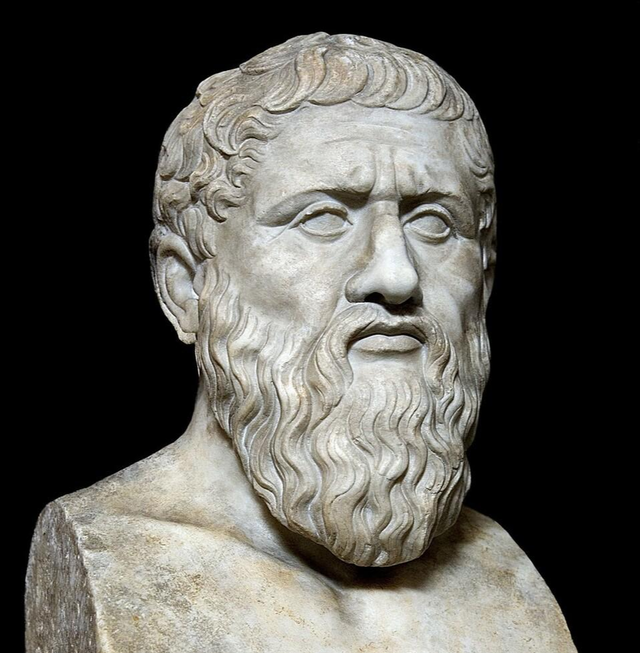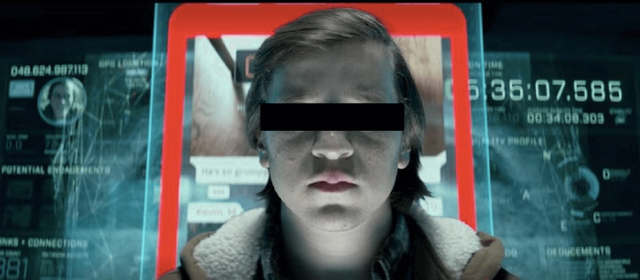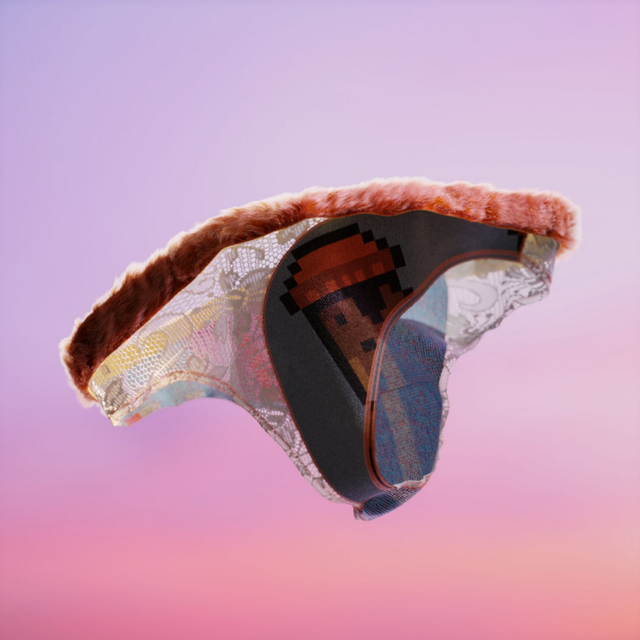"Because rare is precious, and water is the cheapest, but the best."
—Plato, Eusidmus
More than 30 years ago, the first web page was created at CERN, imagined by Sir Tim Berners-Lee and other scientists.
Their imagination at the time: The Internet should be an open standard system for everyone to use. Web 2.0 transitioned the Internet from sharing information to the age of social media, allowing users to create, share and collaborate without requiring web design or technical skills.
Take a look back at the iterations of the network so far. In Web 3.0, everything is about expensive business services and e-commerce, and only the strong will survive. As in the analog days, information still flows from one to many.
image description
▼Web3.0 will not go anywhere, this is the future
But the online world is no longer about viewing a series of files on a server from a PC. It is a collection of devices and objects. For us, the "online" economy consists of the brown Amazon package dropped on the doormat from time to time, the iPod…, but the CD collection stored there for a lifetime, the Kindle, etc.
And as for what Web 3.0 will be, there is a lot of research into the future. There is an argument that Web 3.0 is a device-driven version rather than a PC/browser-driven version of Web 2.0 - where the ability to erect commercial fences around information ends up being a socially acceptable user because They can no longer get what they want for free, they have to pay to get it.
A more radical vision for Web 3.0 is Tim Berners Lee's idea of a "semantic web," in which computers are able to derive so much meaning from existing information that they can begin to represent human interactions interact. It will be a seamless web of information that is both socially constructed and mechanically categorized.
first level title
01. Method
When considering ICT in a changing society, we must of course also ask – from what perspective?
image description
▼ Google of Web 3.0, you will have to pay
Web 3.0 is a network where ICT is clearly around us, our information, our needs, and information in real time: some are starting to call it "flowing""The Web. We want the certification to think about this latest trend, Web 3.0, and offer a proposal for what it might mean, and what might be needed to understand it.
The Internet domain - often described as Big Data - defines Web 3.0 as "Semantic Web technologies that integrate into or enhance large-scale Web applications."
This is very different from the definition of IoT that we consider to be a more accurate description of Web 3.0. Many others echo this broad technical focus in their understanding of phenomenology. As with Web 2.0, most papers addressing this phenomenon rarely approach it with any real theoretical lens, other than using social network theory.
In contrast, in the (lesser) second category, Fuchs et al. focus on sociopolitical consequences, calling Web 3.0 a collaborative web—arguably not very different from the description of Web 2.0 as a read-write web. For many of these and other authors, Web 2.0 is widely regarded as a "cultural construct deeply influenced by business rhetoric," much the same as Web 3.0 will be.
image description
▼The bigwigs of FAANG have to adopt some Web3 technology
But they still criticize "concepts such as Web 1.0, 2.0 and 3.0 as viable and successful theoretical models for social analysis" when in fact they are "cultural constructs" themselves.
Of course, there's another class of people who think about the Web 3.0 concept that it's a useful class of distinction, like distinguishing between a primarily agricultural economy and an industrial economy, although now it's always a mix of the two, and as far as the web is concerned, this This difference is more social than technical.
Such cultural structures, despite their historical and theoretical contingencies—and regional specificity—are ultimately our only windows, and to ignore them is to negate all theory.
image description
▼Culture, Background and Business——Re-examining the Holy Trinity of Brand Growth in the Web3.0 Era
Yes, the concepts of Web 2.0 and Web 3.0 often come with assumptions about user practices: Web 2.0 is seen as engaging users, while Web 3.0 is seen as triggering user cooperation.
first level title
02. The #uksnow event
In the eyes of many, Web 3.0 is much more complex than has been assumed in many articles so far. Take the #uksnow incident a few years ago for example.
Opinion leader Paul Clarke mused throughout the frigid morning on his blog as he envisioned the #uksnow app in terms of the natural phenomenon of snow in the UK, so what happens to crowdsourced data. A few hours later, keen programmer and opinion observer Ben Marsh created the code needed for a Twitter-GoogleMaps mashup, #uksnow available to the blogosphere.
Aggregation sites that blog comments and highlight “trending” topics on Twitter have discovered the existence of this mashup, and, like the blogosphere, popularity fuels growth in popularity.
image description
▼#uksnow map program, the content on this APP can be shared on Twitter with hashtags
People provided this information to #uksnow, "hashtag" it on Twitter (e.g. they tweeted "#uksnow BL7 2/5"). These tweets, which are distributed nationwide, create what are known as Twitter streams. Such streams can be captured using simple search tools and can be displayed by web applications or used for other purposes.
Streaming data from the #uksnow hashtag collected remotely, one of five images of snowflakes of various sizes was placed on GoogleMap in the UK, resulting in
http://www.benmarsh.co.uk/snow/ creates a live snow map of the UK.
Apparently, people are following the trend by standing outside taking pictures of the snow and using their mobile internet devices to provide the desired tweets. This is easy to deduce from the popularity of Twitpic photos, which have short URLs accompanied by location and snow data in the tweet.
image description
▼Snowy photos taken casually, tweeted on Twitter "Snowing Newbury ❄❄❄️5/10 #uksnow"
At the time, the Baseball World Series was being played simultaneously in the US, but was briefly overshadowed in terms of Twitter traffic by the number of people tweeting about (and #uksnow).
This #uksnow event is a great example of what we describe here as Web 3.0.
Borrowing and extending Orlikowski's concept of scaffolding, the physical infrastructure is easily identifiable as the mobile Internet, including the Internet-enabled mobile devices themselves, the signal poles that broadcast and receive signals within each cell, and the millions of dollars involved in hosting and routing server farm for digital files.
This technical bracket is a meteorological bracket with snow clouds passing through the British Isles, with precipitation varying according to atmospheric conditions and terrain elevation. The combination is the cultural phenomenon of social networking, microblogging using a minimally truncated (140 characters) version (160 characters) of the Short Message Service standard, salt-scarce political situations, a disaster-obsessed media, and the British An ancient obsession with the weather.
image description
▼Still from Netflix's "The Social Dilemma"
Attempts to understand and explain this phenomenon from a technocentric or a purely anthropocentric perspective miss this interconnected aspect of modern life.
Furthermore, the scaffolding that makes #uksnow possible demonstrates how emerging cultural and social practices come together, not only for the weather, but also for the new possibilities inherent in mobile internet technological scaffolding and the potential of microblogging.
first level title
03. Post-structuralist thought
In the past, before the World Wide Web, computing systems were small, discrete, short, and controllable.
Since the advent of ICT, with Web 1.0, Web 2.0 and now Web 3.0, it is important to ask: Is our concept of "system" broad enough?
image description
▼Web 3.0 promises a decentralized and more interconnected cyberspace
Extending our understanding of systems beyond the simple computational information systems commonly discussed in some literature, one of the central insights of 20th century structuralist thought is that in the 19th century and before, we were centered on those things.
In fact, the broad concept of "system" is not central, but determined by the system itself
Post-structuralist thought in the 1960s and thereafter further revealed that such structures are often not even "systemic" in themselves: open systems are self-organizing and self-determining in socio-historical contexts, and are constantly changing so that any system Definitions become redundant once they are proposed.
Of course, the most basic, traditional definition of a system, with which most IT professionals are familiar, is that it consists of a comprehensive whole with boundaries, interiors, and exteriors. An information system can likewise be defined as an integrated system of hardware and software used by individuals and organizations to create, collect, and process data.
image description
▼Cryptopanties Art/Fashion pieces are created to bridge the gap between the physical and digital worlds
We argue that Web 3.0 is both a paradigm for these practical complex systems and a paradigm for the philosophical shift required to understand them.
For example, to understand - as the first type of commentator (as articulated by Hendler) - the nature of most of what happens in Web 3.0, as a traditional "information system", like using soil science -- although useful and accurate for studying soil itself -- trying to understand agriculture as a whole.
This approach is to ignore all the rich additional material, such as the different kinds and grades of seeds, the attention of animals and birds, the changes of the weather, and the variety of different machines put into use for the management of the soil.
Moreover, this approach doesn't even begin to consider the entire historical, cultural, regional, and transnational complexities of human farming communities and farming economies using, sourcing, and growing these machines.
image description
▼Flying Fish Club: "The world's first member-only private dining club, memberships are purchased as NFTs on the blockchain"
Theoretical tools must be developed to view information and communication technologies (ICTs) not only as open but, in short, as complex systems, and not only open in the sense of incorporating a range of human and other factors, rather than information technology per se, but open in the sense of duration.
In short, in what is classified as Web 3.0, much of what happens is emergent, as used by complexity theorists such as Kaufman, for whom a complex whole drives out the collective Attributes, which are themselves legitimate "emergent" features.
Therefore, the road to Web 3.0 is not smooth and bright. Originated from the concept of distributed ledger, blockchain technology is taking the left foot for human beings to embark on Web3.0Odaily, but how far is it from realizing a truly beautiful digital future? Optimists say 5 years, while pioneers have gone longer .
As one of the earliest blockchain technology companies in China, Maoqiu Technology has been walking on the road of exploring the unknown Web 3.0. I believe that in the future, Maoqiu Technology can support data exchange with its powerful blockchain technology. We hope to see a fairer, more transparent and more convenient scene in the Web3.0 world.






